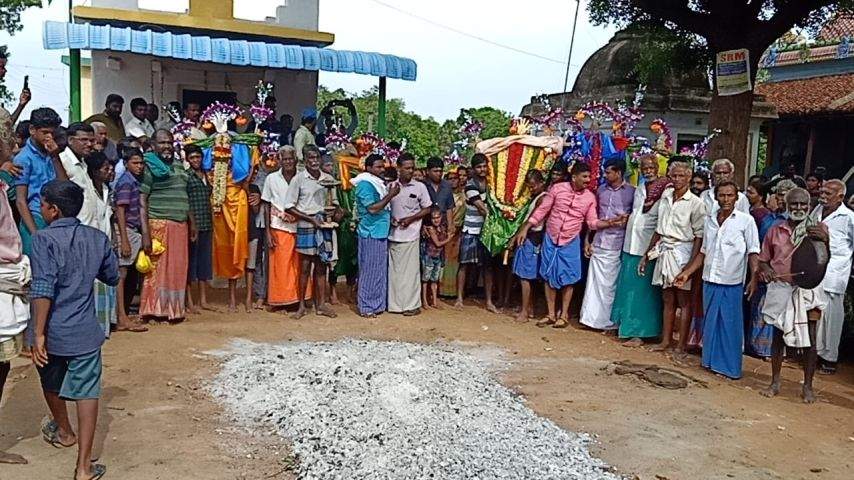
The residents of Kasanadu Pudu, in Thanjavur district of Tamil Nadu who are predominantly Hindus except for a handful of Muslims, also start preparation for the mourning ten days in advance.
By Syed Ali Mujtaba
A heartwarming news of communal harmony has come from Hirebidanur village in Saudatti taluk at Belagavi district formerly known as Belgaum district in Karnataka. Here Hindus observe Muharram with all its pomp and glory even though the village does not have a single Muslim family.
This year the month of Muharram in India began on Sunday, July 31, 2022, and its related rituals closed on August 9, 2022, a national holiday.
The Hindu members of the village Hirebidanur have been observing Muharram from day one every year. A very bright and colorful procession adorn the streets and the people hold torches and walk along with the procession with vibrant folk music playing in the background.
“We celebrate Muharram on par with our village fair. Several art forms are showcased in those eight days which also gives an opportunity for folklore to exhibit their talent. The entire village has been happily celebrating the festival for over a century now,” said Prakash Kumar, a resident of Hirebidanur while talking to the media.
Hirebidanur village is some 51 kilometers from Belagavi district headquarters. It is home to around 3000 people but does not have a single Muslim family. The majority of the population of the village belongs to Hindu Valmiki and Kuruba communities.
During the Muharram observance, a Maulvi from a neighboring village is called for a week to offer prayers inside the mosque of Hirebidanur village, while the locals celebrate the festival outside the mosque.
 The residents of Kasanadu Pudu, in Thanjavur district of Tamil Nadu who are predominantly Hindus except for a handful of Muslims, also start preparation for the mourning ten days in advance. They clean the vicinity of the temple (Koil) near the public square of the village. They paint and decorate the Koil with new green flags, flowers and decorative lights.
The residents of Kasanadu Pudu, in Thanjavur district of Tamil Nadu who are predominantly Hindus except for a handful of Muslims, also start preparation for the mourning ten days in advance. They clean the vicinity of the temple (Koil) near the public square of the village. They paint and decorate the Koil with new green flags, flowers and decorative lights.
On the eve of Muharram, the Hindu women of the village take out a procession from each street and that ends at Koil temple.’ They carry a large pot filled with sweetened water atop their heads with a small pot over the larger pot that has puffed rice and jiggery inside. Members of the Muslim families also conduct some rituals and offer puffed rice and jaggery to the Koil.
While women take out the procession with pots, the men of the village take out another procession with hand symbol with five fingers, tied to a pole and call it “Five finger Allah.” This is followed some caring four, three, two and single finger symbols. This procession wades through the entire village and reaches the Koil in the end.
Muharram is observed as a period of mourning and extreme grief for the Muslim community world over. It is on these days the battle of Karbala in Iraq took place. It saw the martyrdom of Hazrat Imam Hussain, the grandson of the Prophet of Islam. As a mark of his martyrdom, Muharram is observed.
The Shia sect of Muslims observes Muharram with extreme grief and act of piety. They fast and indulge in prayers during the ten days of extended rituals. On the last day, a procession is taken out where the faithful inflicts self-injury on their body as an act of mourning and grief. Whereas the Sunni sect of Muslims observes it differently; they also fast and indulge in prayers and take out a colorful procession with Tazia and Sipals that culminates in the burial ground.
_______________
Source: The India Observer, Counter Currents